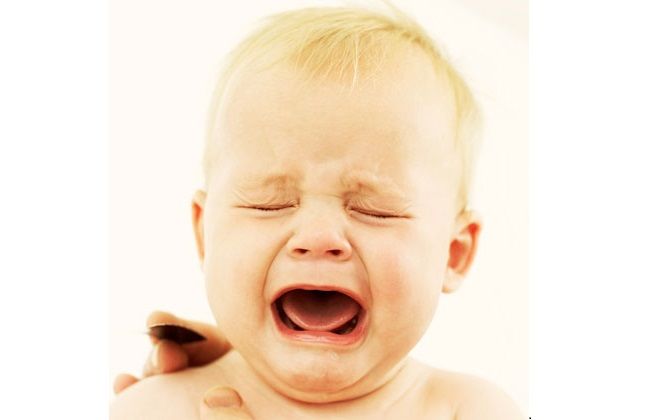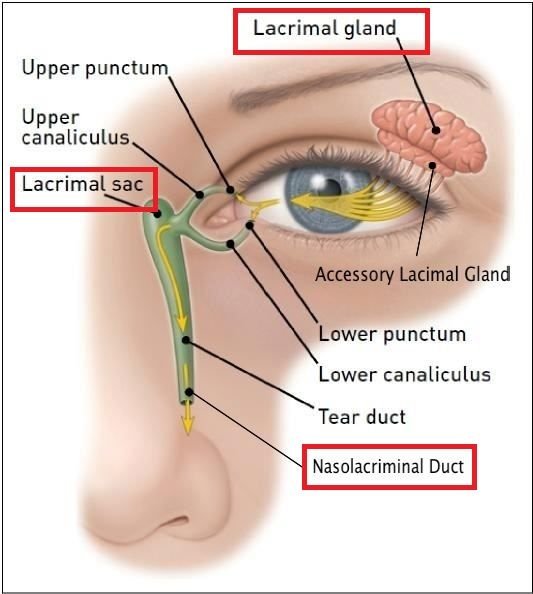WHY ARE HUMANS PROGRAMMED TO CRY AND WHY DO MEN CRY LESS? - THE SCIENCE OF CRYING


CRYING: A NATURAL HUMAN BEHAVIOUR

Crying is the first thing that we do when we come to this world and something that we do frequently for the rest of our lives. It is defined as a human behaviour involving the shedding of tears in response to an emotional state such as anger, happiness or sadness. Its definition is slightly different than that of lacrimation which is the non-emotional shedding of tears. The vocal component of crying is actually quite common in animals but humans are the only animals that their crying is clearly accompanied by tears. Speaking of which, there are actually three types of tears. Basal tears are antiseptic and also used for lubricating the eye ball and preventing its layers from going dry, reflex tears are our defence against irritants such as smoke and finally emotional or psychic tears are the ones we shed during crying.

Source
But how exactly do we cry? Take a look at the picture above. When we are exposed to an irritant or an overwhelming emotion, our brain activates the lacrimal gland which in turn produces and excretes tears. When the tear comes in contact with our eyeball our eyelids automatically start to blink, spreading the tear into a uniform film layer. The tear eventually drains into the lacrimal sac and from there into the nasal cavity through the nasolacrimal duct. This is why our noses get runny when we cry. But when too many tears are produced, the ‘drainage’ system overflows and the tears will start sliding down our cheeks.

WHY DO WE CRY?

Just like laughing (you can read my article about laughing here), crying is a form of non-verbal communication. Let’s start with the age period of our lives during which crying is not only an everyday occurrence but its usefulness is not really enigmatic: our infancy. It has been demonstrated in endless researches that parents (and especially mothers) are extremely sensitive to the high frequency sound of a baby’s cry. During this period of our lives, crying is the only method we have to communicate with the people around us. In fact, three different types of infant cries have been identified: the basic, the angry and one in response to pain. It is believed that crying is a characteristic feature of newborn mammals because, in contrast with reptiles, we are more ‘needy’ when we come to this world. This is especially true for human babies which because of the huge size of our heads and the relatively narrow pelvis of the females, we have to come in this world prematurely with underdeveloped brains. We are born completely helpless and incapable to survive by ourselves, therefore our cries are essential to attract the attention of our parents.

Source
But the big question here is, why do we continue to cry as adults? It is believed that in our ancestors, tearing was only a response to irritants. But at some point in our history a genetic mutation allowed our emotion centres to form neural connections with the sensory reflex parts of our brains associated with tears. As stated at the beginning, crying is a method we use to communicate with the people around us. Just like laughing, blushing, anger which are all many times involuntary, crying is a genuine demonstration of our emotional state. Every time we show our sadness, our distress or our happiness, we help build social bonds with the people around us. A sad cry invokes similar feelings to people around us. In other words, every time we cry we will make someone around us to feel sorrow as well. As a result the people witnessing our cries become more empathetic and sympathetic towards us, they perceive us as less aggressive and are much more likely to help us. Empathy within a social group is absolutely vital for the building of a strong community with the largest chance to survive.
Because our crying causes an emotional effect to others, one could argue that in a way, our tears are a form of chemical manipulation of the people around us. It is an expression of our distress and powerlessness. The same way that in our infancy we used crying to get the attention of our parents, we use it in our adulthood to get help from others. It is also believed that crying is a form of emotional release. During crying, our heart rate increases, we sweat and our breathing rate goes down. Tears of sadness, unlike reflex tears, contain a higher concentration of the hormone ACTH which is produced in response to biological stress. As a result our body experiences a calming effect which helps us get through an emotionally difficult situation.

WHY DO WOMEN CRY MORE?


When we ask ourselves the question above, it is very easy to give an answer that focuses on social pressure and stereotypes. But the truth is much more complicated than that. Even though society certainly does play a role in our behaviour, once we study gender stereotypes a bit deeper, then we realize that a lot of them are actually based on biological and evolutionary facts. First of all, the statistics leave no doubt as to which sex is more likely to cry. Even though both cry for similar reasons, women cry approximately 30-64 times per year and men 6-17 times. The average duration of the female cry is 6 minutes and that of the male is between 2 and 4 minutes. The female cry has a 65% chance to turn into sobbing, whereas the male one only has a 6% chance.
Up to puberty, boys and girls cry at approximately the same rate. But what happens in adolescence that makes women cry more? Hormones play a major role in this. Women have a higher level of prolactin and oxytocin, both of which seem to promote it. Also, even though the mechanism is unclear, testosterone has been shown to inhibit crying. Men who are treated with testosterone lowering drugs for prostate diseases have a higher chance of crying than men with normal testosterone levels. Another publication, supports that the size of lacrimal ducts plays a role. These ducts in men are larger than in females, therefore tears are much less likely to well up.
The biological roles of the two sexes in the community also play a role. As we said earlier, crying could be a sign of powerlessness and vulnerability. In a male, whose evolutionary role is to exhibit strength and protect his family, frequent crying would definitely give him a survival and reproductive disadvantage. On the other hand, for the female, crying not only would not be seen as a disadvantage but it would actually help her survival. As the weaker half of our species when it comes to body strength, females rely on males for their protection. This may not be particularly evident in today’s society, but hundreds and thousands of years ago, things were very different. The cry of the female, just like the cry of a child, could invoke the protective instincts of the male. A very interesting experiment was published by the Science Journal which demonstrated how men respond to female crying. When men smelled a tube containing the tears of a sad woman, they experienced a drop in their testosterone levels, they became more sympathetic towards the female and they also found her more attractive. The differences therefore between males and females are a complicated result of both social and biological factors.

What do you think could explain our differences when it comes to crying and what do you think is the importance of this human behaviour? I’d love to hear your opinions!!
==============================================================================
Sources:
https://en.wikipedia.org/wiki/Crying
http://www.independent.co.uk/life-style/health-and-families/features/why-do-we-cry-the-science-of-tears-9741287.html
http://science.sciencemag.org/content/331/6014/226
==============================================================================

For many more articles like this, follow me @nulliusinverba

Good topic! It's interesting that someone Woman.. starts to cry more often after 40... ( my mom was a classical example of crying 40... - before she turned that age.. she barely cried.. to be honest I didn't saw her even once cried..). I think tears realase some anger and stress out .... they also help us to show emotion... it's human to cry. Thanks for sharing this!
very true @pointtojoin! thanks
Thank you for upvoting my photo. If you like that one you will love my other ones. https://steemit.com/@readallaboutit
Beautiful photos. Following :)
Glad you enjoyed them. I will follow you back. 👍😊
@nulliusinverba I think men cry more than women :) We can shout more, or try to forget things, but women don't cry as often as we can see in Hollywood movies ;-)
the research was not done in Hollywood but with everyday women